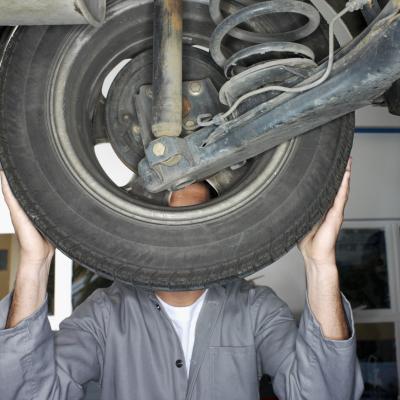
Once upon a time, no one really cared what brake calipers, springs or rotors looked like. In those days, such parts were beautiful as long as they did the job with minimal complaint. But steamroller wheels and lightweight forgings with open-element designs have cast a bright and, some would say, unwelcome spotlight on the aesthetics of undercarriage design.
This is the least attractive option unless you have stainless or titanium coil springs. Raw steel is a rust-bomb waiting to happen, so even a thin coat of one-dollar spray-paint is better than using nothing. Polished stainless obviously doesn't need a coating, and titanium will quickly form a thin layer of oxidation that will protect it from further damage. Titanium's oxide layer is quite beautiful, too; depending upon the angle of the light and level of oxidation, the titanium might reflect in blue, dark purple, silver or even black.
Painting is the go-to option for many, but it's not as simple as just spraying on a coat of hardware store black enamel. Paint dries to a hard shell, and coil springs can flex over a foot in their range of movement. Worse yet, a coil spring doesn't just bend -- it also twists a little. That's a sure recipe for cracking and peeling if your paint isn't flexible to bend and strong enough to hold on. Latex paint is flexible enough, but doesn’t hold up well to road damage and heat. Go with a quality polyurethane designed specifically for springs.
Powder coating is just another type of paint, but one that bakes to a thicker and tougher shell than regular paint. A powder coat is a flexible plastic similar in consistency to a Dixie cup. Many aftermarket springs come powder coated whether you want them to or not, and that's not a bad thing. Powder coat is extremely durable, chemical-resistant and comes in a variety of colors including chrome and gold. Powder coating is an enjoyable do-it-yourself sort of project, but don't cure it in an oven used regularly by a spouse you'd like to keep.
Galvanization and aluminizing are valid metal coating options for springs, but they look like complete garbage on anything but trampolines and garage doors. Just don't. Chrome-plated springs have been around for ages, and other metals are making inroads to this market as well. A cheap chrome-plating job consisting of nothing more than a thin layer of nickel and chrome will eventually rust through and chip off, so you get what you pay for here. A quality tri-chrome job using a copper base coat will prove much more durable and will keep its look for years. Copper plating is one of the trendier finishes out there, but requires some sort of clear coat or chrome to keep it from turning green. There's always gold if you're already paying a pair of bodyguards just to watch your rims.